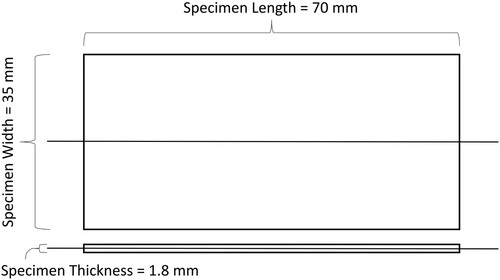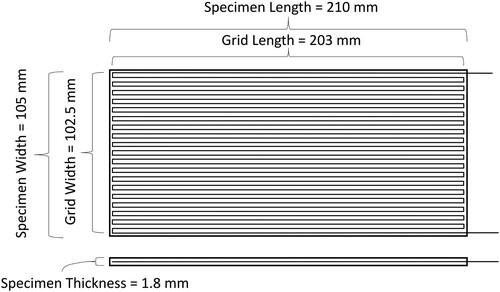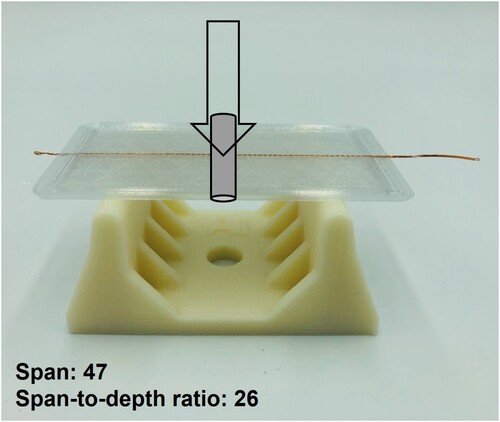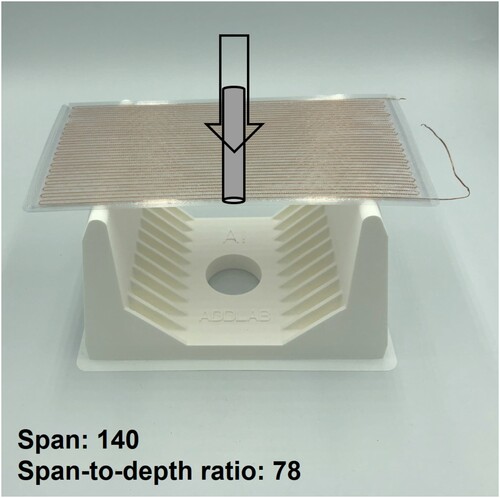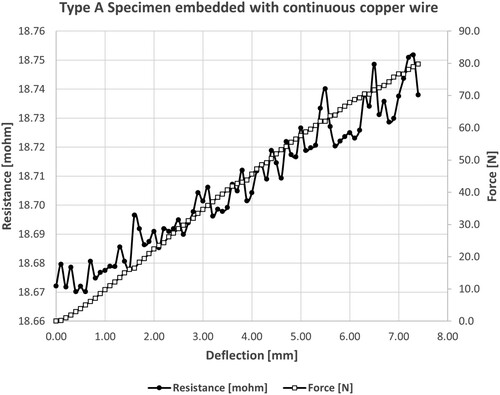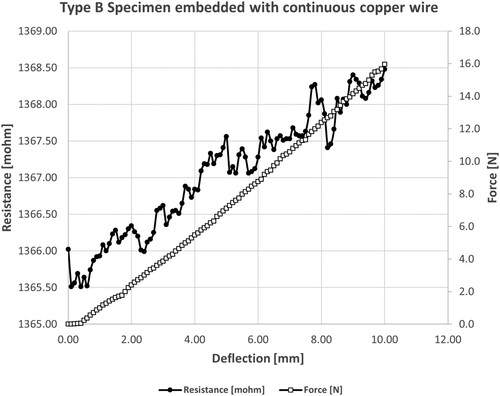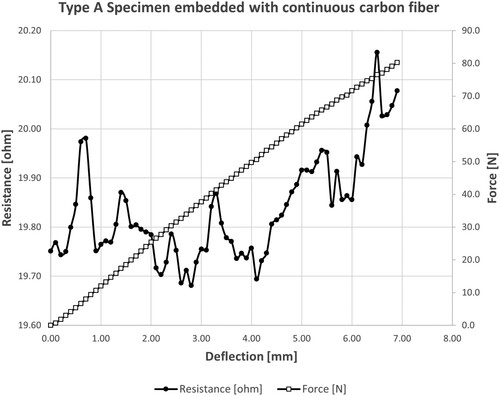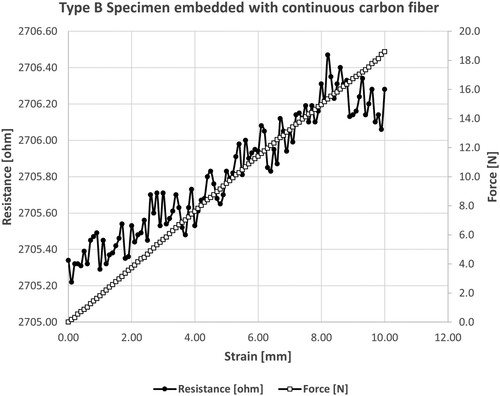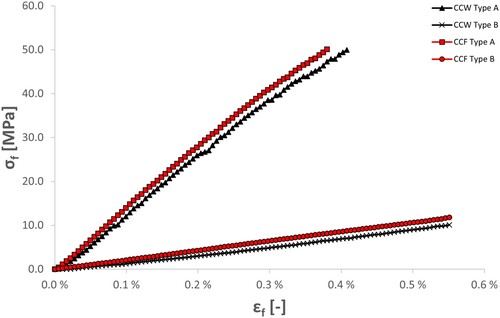Figures & data
Table 1. Global additive manufacturing parameters.
Table 2. Processing parameters of continuous carbon fiber and continuous copper wire.
Figure 5. Additive manufacturing of Type B specimen with (a) continuous copper wire and (b) continuous carbon fiber, and (c) the end-use specimens.
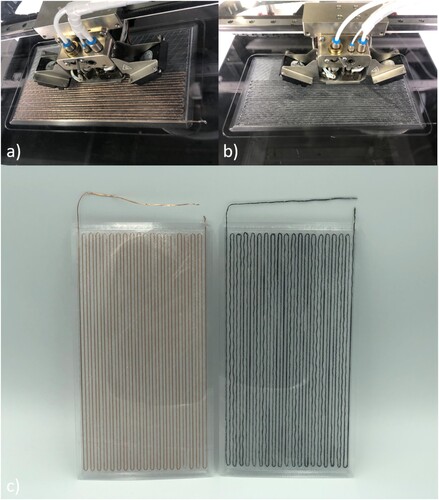
Figure 10. Linear regression of fractional change in electrical resistance as a function of force and deflection for Type A and Type B specimens. (a)Type A: CCW (b)Type B: CCW (c)Type A: CCF (d)Type B: CCF
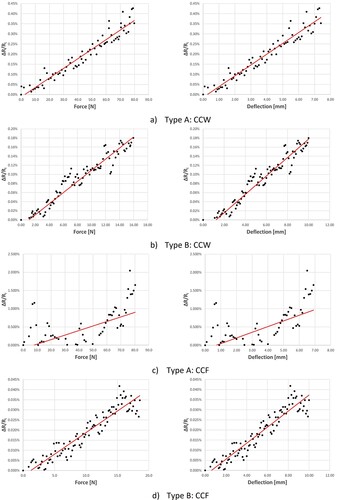
Table 3. Piezoelectric properties of the test specimens based on statistical evidence.
Data availability statement
The data that support the outcomes of this study are available from the corresponding author upon reasonable request.

